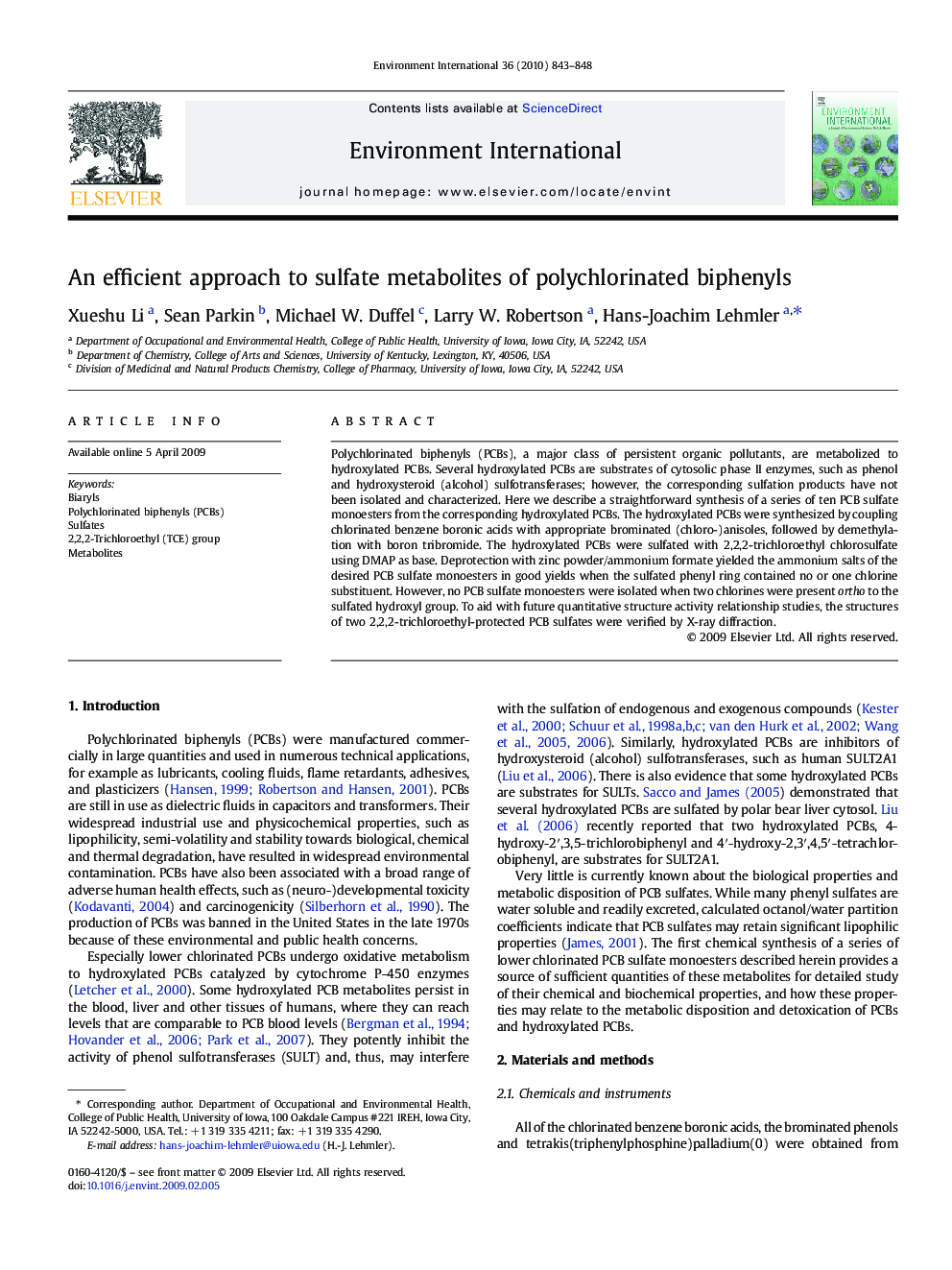| Article ID | Journal | Published Year | Pages | File Type |
|---|---|---|---|---|
| 4423198 | Environment International | 2010 | 6 Pages |
Polychlorinated biphenyls (PCBs), a major class of persistent organic pollutants, are metabolized to hydroxylated PCBs. Several hydroxylated PCBs are substrates of cytosolic phase II enzymes, such as phenol and hydroxysteroid (alcohol) sulfotransferases; however, the corresponding sulfation products have not been isolated and characterized. Here we describe a straightforward synthesis of a series of ten PCB sulfate monoesters from the corresponding hydroxylated PCBs. The hydroxylated PCBs were synthesized by coupling chlorinated benzene boronic acids with appropriate brominated (chloro-)anisoles, followed by demethylation with boron tribromide. The hydroxylated PCBs were sulfated with 2,2,2-trichloroethyl chlorosulfate using DMAP as base. Deprotection with zinc powder/ammonium formate yielded the ammonium salts of the desired PCB sulfate monoesters in good yields when the sulfated phenyl ring contained no or one chlorine substituent. However, no PCB sulfate monoesters were isolated when two chlorines were present ortho to the sulfated hydroxyl group. To aid with future quantitative structure activity relationship studies, the structures of two 2,2,2-trichloroethyl-protected PCB sulfates were verified by X-ray diffraction.
